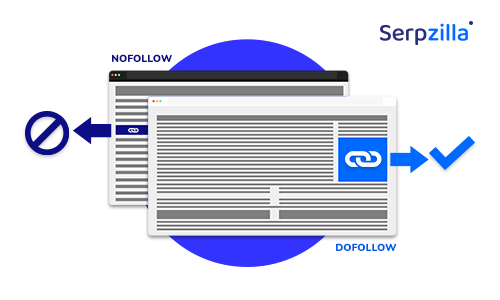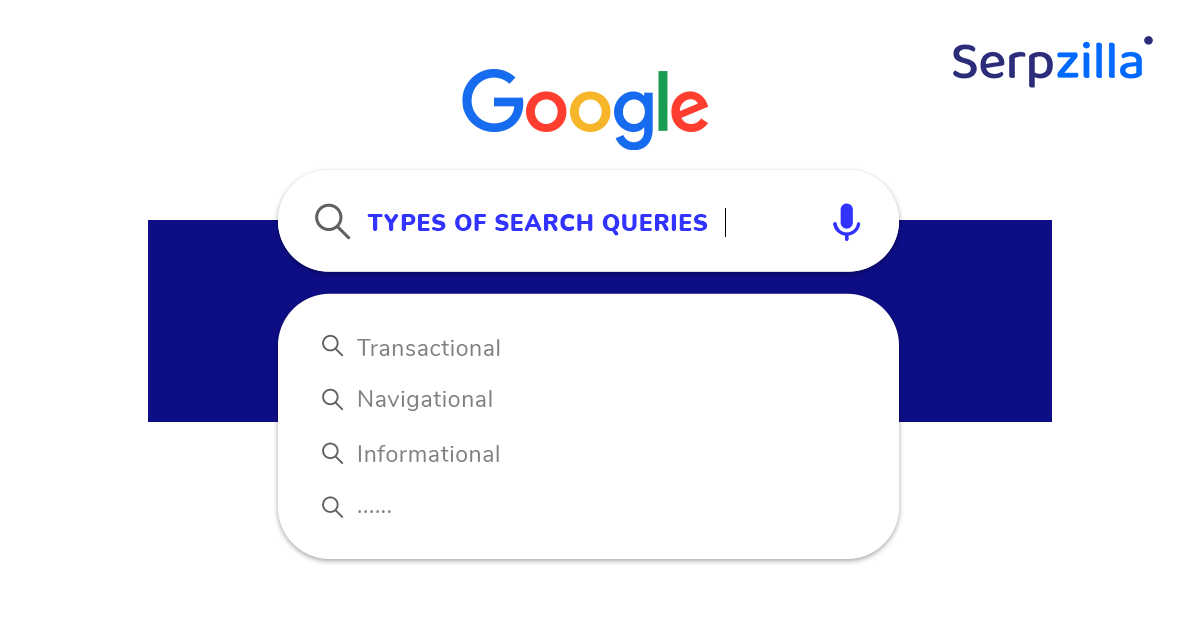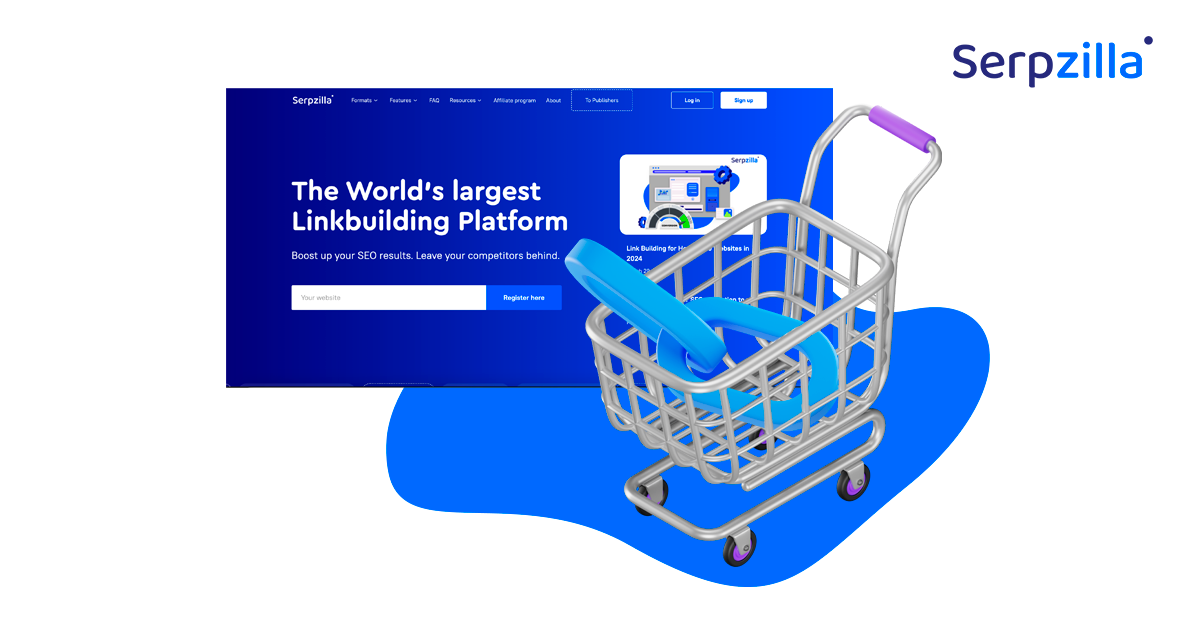What is link building, and why is it important in the world of SEO?
1. An introduction to Link Building:
Put simply, link building pertains to the procedure of obtaining hyperlinks from external websites to your own. These hyperlinks serve as pathways for users to access various web pages, including your own. Beyond their navigational purpose, these links play a pivotal role in search engine metrics. They aid search engines in efficiently configuring algorithms and ranking pages based on both their relevance and authority.
The Importance of Backlinks as Ranking Signals for Search Engines:
Backlinks, particularly when originating from reputable and contextually relevant sources, particularly those with a high DA score, function as validations or expressions of confidence in your website as an authority within your chosen niche. Notably, search engines like Google regard these backlinks as indications of a website’s trustworthiness, authority, and relevance. When numerous reputable websites link to a specific page, it is indicative of that page offering valuable and useful content. Consequently, search engines grant it higher rankings in search results. Nevertheless, it’s essential to acknowledge that not all backlinks are evaluated equally. A link from a highly esteemed website within your industry carries more weight than a link from a less relevant, trusted, or known site.
A Brief Historical Overview and the Evolution of Link Building Practices:
Link building has long been an integral part of SEO metrics. Initially, search engines primarily assessed page rankings based on keyword density. However, due to the widespread exploitation of manipulative SEO techniques, Google moved on from this metric. Search engines evolved to consider both the quantity and quality of backlinks associated with a website, giving rise to link building as an essential strategic SEO practice.
Throughout the years, as search engines fine-tuned their metrics, the quality of links gained grew more important than quantity. Strategies like link farming, which entailed the creation of interconnected networks of pages, were penalised. This progression prompted SEO professionals to embrace more organic link-building techniques, with a focus on quality, relevance, and user value.
In summary, link building, despite continually evolving, remains a foundational element of SEO. Its role in bolstering online visibility, driving web traffic, and establishing domain authority should not be overstated. Nevertheless, like all SEO practices, success hinges on comprehending its nuances, adjusting to its transformations, and implementing strategies with fairness and foresight.
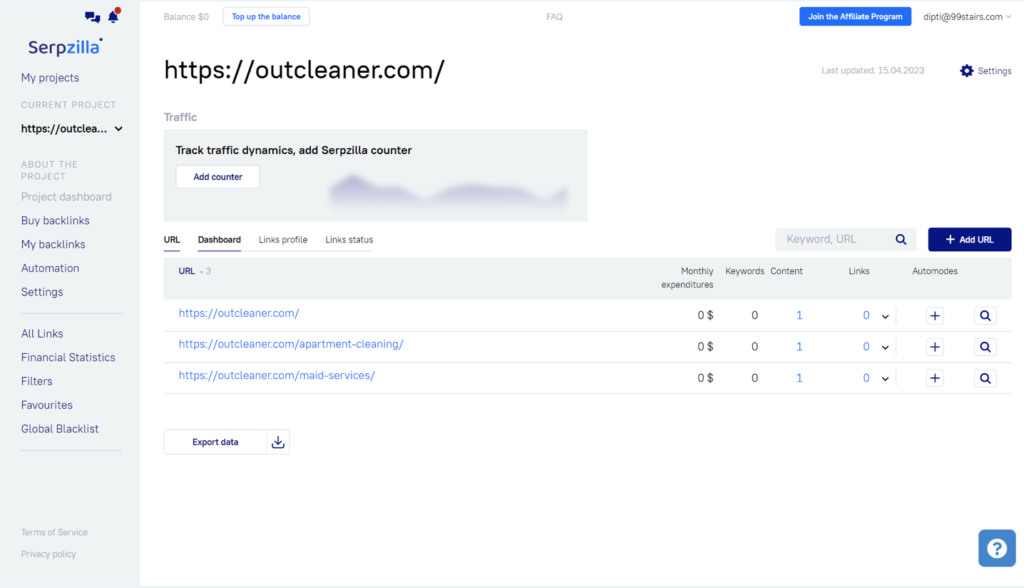
2. Analysing Guest Posts vs. Rented Links:
Definition and comparison of Guest Posts vs Rented Backlinks
Guest Posts:
Guest posting involves the creation and publication of your own content on someone else’s website or blog. This method is commonly used for gaining exposure, establishing authority within an industry or niche, and acquiring backlinks to your own website. These backlinks usually appear in the form of an author’s bio or within the actual content, directing readers back to the guest author’s website. Serpzilla offers a complete guide on guest-posting, should this information be of use.
Rented Links:
Rented links, as the name suggests, are backlinks that you pay for on a monthly or yearly basis. In contrast to guest posts, which may result in permanent links, rented links are temporary and remain active only as long as you continue a subscription.
The primary distinction between these two methods lies in how the backlinks are obtained. Guest posts involve the creation of valuable content to earn a link, while rented links are transactional in nature, thus may be less organic.
Advantages and Disadvantages of Each Method:
Guest Posts:
Advantages:
- Provides a bigger platform to demonstrate industry expertise.
- Can establish lasting relationships with others in your chosen niche.
- Typically results in permanent backlink placement.
Disadvantages:
- Can be time-consuming.
- Requires the effort of producing high-quality content.
- Not all websites accept guest posts.
Rented Links:
Advantages:
- A quick way to acquire backlinks.
- Allows control over things like anchor text and link placement.
Disadvantages:
- This strategy can become expensive over time.
- There is a risk of search engines viewing the link as unnatural and manipulative.
- Dependency on the host site’s policy (they can remove the link if you stop making payments).
Choosing the Right Approach Based on Your Objectives and Budget:
The decision between guest posting and rented links rests on your link building objectives, time constraints, and budget. If your goal is to pursue an organic, long-term strategy that enhances your domain authority and brand reputation in the long run, guest posting may be the preferred choice. Alternatively, if immediate results are necessary and budget constraints are not a concern, rented links can be a viable option. It is essential, however, to be cautious and ensure that the links originate from reputable sources to avoid potential penalties from search engines.
In practice, a well-balanced combination of both strategies often leads to optimal results. By diversifying your link-building approaches, you not only mitigate risks but also capitalise on the advantages each method offers. Tailoring your approach to align with the specific requirements and nuances of your website and industry standards is a recommended practice.
3. Cost and Value Analysis:
Evaluating the Cost Efficiency of Various Link-Building Approaches:
Both guest posts and rented links involve costs, whether direct or indirect. Guest posts incur expenses in terms of time and resources spent on crafting high-quality content, understanding key industry blogs, and establishing relationships with blog owners and experts. On the other hand, rented links have more transparent yet long-lasting costs, typically billed on a recurring basis via the link provider.
To gauge the cost-effectiveness of each approach, it is vital to balance these costs against potential benefits for your website, including increased traffic, enhanced DA, and the broader impacts that these strategies can have on SEO metrics.
The Concept of ‘Gespostov’ as an Adaptable Strategy:
The term ‘Gespostov’ stems from the Russian word ‘геспост’ (gespost) and denotes a strategy that infuses principles from both guest posting and rented links. Through the ‘gespostov’ method, businesses can generate content that not only secures a backlink but also offers a degree of control over the link’s placement and permanence.
This approach presents a middle ground, encompassing the organic advantages of guest posting and the controlled benefits of rented links. However, it demands a flexible budget as it encompasses both the one-time cost of content creation and recurring costs such as link rental.
Understanding the Financial Ramifications of Embracing One Method Over the Other:
As aforementioned, opting for a single link-building approach over the other can have distinct financial implications:
Guest Posts:
Exclusively investing in guest posting may result in higher initial costs associated with content creation, outreach efforts, and building relations with industry leaders. Nonetheless, long-term benefits such as enduring backlinks and increased brand visibility can potentially outweigh these expenditures as results are delivered.
Rented Links:
Relying solely on rented links can lead to consistent monthly or yearly expenses. While immediate results may rationalise these costs, there is an inherent risk of losing these links when payments cease, potentially resulting in an immediate decline in search rankings. Using such a link building strategy may incur long-term costs as foundational backlinks will need to be maintained to ensure continued positive SEO ratings.
In conclusion, while both methods possess their advantages, it is imperative to weigh the financial implications in both the short and long term. An integrated approach, potentially incorporating the ‘gespostov’ strategy, can establish a reasonable cost-to-benefit ratio, ensuring optimal value for your investment.
4. Strategic Planning and Link Diversification:
The Significance of Varied Link-Building Approaches:
In the continually evolving domain of SEO, it is essential not to put all of your eggs in one basket. Diversifying link-building strategies is critical for ensuring the resilience of your website against metric updates, competitive schemes, and unforeseen transformations within your chosen niche. Furthermore, search engines hold a preference for a diversified backlink profile as it mirrors authentic, organic growth and genuine niche authority.
Adapting to Alterations in the SEO Terrain/Competitor Tactics:
Search engine algorithms are in constant motion, continuously configured to supply users with the most appropriate and top-quality search results. In sync with these algorithmic shifts, your link-building strategies must also evolve. Vigilance regarding industry trends, competitor actions, and alterations in search engine behaviour is essential. For instance, if a competitor experiences a sudden rise in rankings due to a particular type of backlink, it may necessitate exploration and potential onboarding of a similar approach.
Hazards Linked to an Unbalanced or Unchanging Link-Building Approach:
An imbalanced strategy, usually encompassing an overreliance on one type of link source or failure to adapt your approach over time, exposes your website to more than one type of vulnerability. A quick influx of similar backlinks can be interpreted as manipulative by search engines, potentially culminating in SEO penalties. Furthermore, the absence of regular revisions and diversification can lead to your content becoming old, allowing more adaptable competitors to gain the upper hand.
In summary, strategic planning necessitates comprehension of your existing niche’s status, anticipation of forthcoming SEO shifts, and a diversification of tactics to maintain a truly competitive edge. Being flexible and proactively engaging in link-building ensures that your website retains its competitive, relatable, and authoritative edge within its niche.
5. Mathematical Precision in Link Building:
The Imperative of Precise Calculation in Crafting Link-Building Strategies:
When configuring SEO, precision is non-negotiable. Every decision taken towards a link building strategy has substantial influence over a website’s ranking and visibility. To guarantee optimal outcomes, it is essential to approach link-building with a mathematical mindset. By calculating variables such as the volume of backlinks, their origins, anchor text distribution, and rival backlink profiles, SEO experts can develop strategies that maximise advantages while reducing overall risks.
Adapting Approaches Based on Comprehensive Competitor and Page Examination:
Scrutinising competitor backlink profiles empowers the identification of gaps in a website’s strategy and the exploitation of opportunities overlooked by the competition. Furthermore, concentrating on the performance of individual pages, as opposed to the entire website, offers more detailed insights on the perceived value of content. If a specific page is underperforming despite a robust backlink profile, underlying issues like content quality or user experience demand attention.
Leveraging tools and analytics platforms permits an in-depth exploration of these metrics, providing clarity regarding efficacy and inefficacy. For example, if a competitor’s page with a lower domain rating surpasses your own in rankings, it may be attributable to the quality or relevance of their backlinks, demanding an adjustment in your link-building approach.
When you’re looking for competitors, you should start by identifying them in two ways:
1. Look at specific pages that relate to what you’re trying to achieve. These pages often centre around particular search queries or user intentions.
2. Consider the entire industry. If there are many common keywords and your competitors rank well for them, they are likely strong competitors in the industry
When analysing competitors, it’s crucial to distinguish between two types of links: those pointing to a main homepage and those leading to specific URLs correlated with user search intent. Links to a competitor’s homepage, comprising about 50%-70% of their links, enhance the overall trust and authority of their site, benefiting all pages. Links to specific promoted pages primarily boost site authority and focus on improving rankings for specific search queries.
Continually Ensuring Mathematical Precision:
While intuition and experience hold significance in creating your website, precision reigns supreme in link building strategies. An approach fortified by meticulous planning, continual analysis, and adaptations guided by quantifiable metrics ensures the persistence of efficient, effective, verifiable, and adaptable strategies in the face of ever-evolving search engine algorithms and competitor actions.
6. Domain-specific Factors and Page Analysis:
Delving into Domain Ratings and Their Significance:
Each internet domain possesses a specific rating, frequently referred to as ‘Domain Authority’ or ‘Domain Rating’, as aforementioned. These ratings are determined by a variety of factors, including the quantity and quality of backlinks, the age of the site, traffic, and content quality – check out Serpzilla’s guide on DA for more info on this. Domain specific factors serve as indicators of a website’s trustworthiness and authority within its niche. In the world of link building, a higher domain rating usually signifies that backlinks from such domains hold greater value and authority, resulting in a notable SEO enhancement.
Emphasis on Scrutinising Individual Pages Over Entire Websites:
Traditionally, SEO strategies often evaluated the overall strength of an entire website. However, as metrics have progressed, there’s a growing recognition that analysing individual pages can yield more specific and actionable insights. After all, when users seek specific results, search engines deliver single pages, not entire websites.
By concentrating on individual pages, it becomes feasible to identify particular strengths or weaknesses in your link-building strategy. For instance, a page might underperform due to a low number of backlinks, even if the overall domain has a healthy backlink profile. By addressing these differences, SEO experts can guarantee optimal performance for each page.
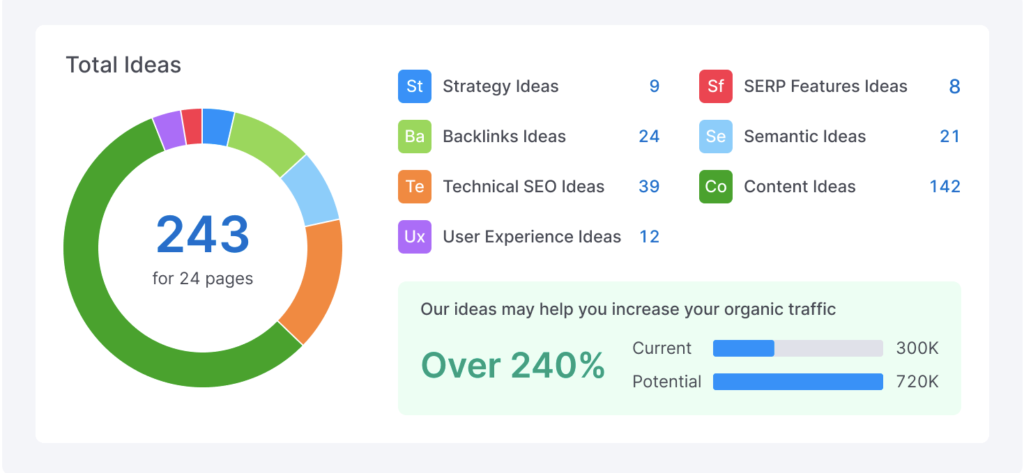
Adapting Approaches Based on Findings from Competitor Pages:
The study of competitors provides a wealth of valuable information. Through an examination of the backlink profiles of competitor pages that achieve high rankings, you can uncover patterns or specific links contributing to their success. This isn’t about replicating the competition but rather gaining a profound understanding of the background and recognizing potential opportunities to boost your own SEO metrics.
For instance, if a competitor’s page gains traction thanks to a particular guest post or a link from an industry-specific expert, it may permit exploration of similar opportunities. This involves the gathering of insights and the strategic integration of these findings.
Competitor analysis in link-building strives to outperform rivals by attaining superior donor domains for promoted URLs and the entire domain. Yet, it’s vital to remember that links alone won’t guarantee success; technical and content optimization is essential to surpass competitors in search rankings.
Conclusion on Domain-specific Factors and Page Analysis:
The strength of the domain and thorough page analysis together constitute the foundation of an effective link-building strategy. Through continuous analysis and adaptation guided by these insights, it is feasible to maintain SEO efforts that are precise, efficient, and have the desired results within your niche.
7. Client Communication and Transparency in SEO:
Clear and Open Communication with Clients:
In the SEO and link building domain, transparent communication is a non-negotiable element. Clients, regardless of their familiarity with SEO, deserve a comprehensive understanding of where their investments are allocated. This transparency forms the foundation of trust and long-term relationships.
For instance, clarifying the rationale behind opting for guest posts or rented links, and how this decision aligns with the client’s goals, aids in fostering trust. Clients who grasp the methodology are more likely to exhibit patience, recognizing that SEO is a measured, long-term game.
Justifying Budgets and Link Distribution:
Link building is an investment with associated costs. Clients need clarity on the value they receive for their investment. A well-structured cost and value analysis is therefore indispensable. If a campaign necessitates a higher budget due to niche competitiveness or the quest for high-quality backlinks, it’s crucial to articulate these reasons with clarity.
SEO professionals should be prepared to showcase the meticulous calculations that underpin their strategies. Demonstrating how the chosen link-building approach is geared towards outperforming competitors can be a convincing argument towards budget allocation.
Adaptation to Changing Client Objectives:
Clients may express the need to pivot their strategies, whether by targeting different keywords or shifting their audience focus. Open lines of communication enable the SEO team to promptly adjust to these shifting objectives whilst staying consistent to a reliable strategy. Regular feedback sessions are essential in maintaining alignment and ensuring that the link-building strategy remains aligned with broader business aims.
Conclusion:
Client-SEO agency relationships thrive on transparent, honest discourse. By being forthright, justifying decisions, and staying responsive to feedback, agencies establish client satisfaction, fostering enduring partnerships. In the realm of SEO, the journey is as important as the destination.
8. Conclusion and Future Outlook in SEO Link Building:
The Dynamic Landscape of SEO and Link Building:
In concluding our exploration of SEO link-building strategies, it is evident that the SEO field, particularly link building, remains in a perpetual state of transformation at the hands of search engines. From the early era of indiscriminate link exchanges to the sophisticated and calculated link-building approaches we employ today, SEO professionals have consistently adjusted to meet the evolving algorithms of search engines.
Embracing Ongoing Awareness of Latest Trends and Technologies:
In this environment of continual change, staying abreast of the latest trends and technologies is not a choice but instead essential. Search engines, exemplified by Google’s algorithm updates, possess the capacity to substantially influence or disrupt established strategies. To maintain a competitive edge, mastering present best practices is not sufficient. Staying well-informed about industry developments, active participation in forums, attendance at SEO conferences, and a commitment to ongoing testing and experimentation are imperative. The tools and methodologies that yield results today might well become out-dated in the near future, making continuous learning a necessity in this industry.

Use Google’s Search Console to understand how the search engine evaluates your website
The Imperative of Adaptive and Flexible Strategies:
At the core of an effective link-building strategy lies its adaptability. In a domain where competitors seek advantages and search engines persistently fine-tune their algorithms, inflexibility can be the downfall of an SEO strategy. Whether it entails a re-evaluation of the balance between guest posts and rented links, broadening the spectrum of link sources, or revising budgets and objectives, an adaptive approach ensures the ongoing effectiveness of your SEO strategy.
Boost your SEO results! Link building has become fast and easy with Serpzilla. Buy quality backlinks on authority websites with high DR.
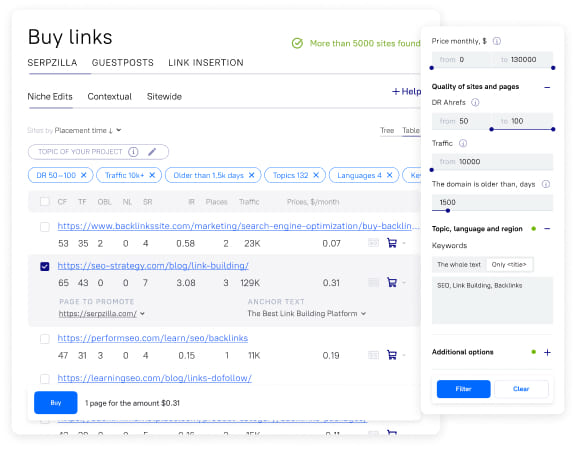
Final Remarks:
Link building, albeit just one facet of SEO, remains a crucial factor in influencing a website’s search engine ranking and visibility. As we progress, strategies will inevitably evolve, tools will undergo transformation, yet the fundamental principle endures: the construction of authentic, high-quality links that furnish genuine value to users Is essential.
For businesses and SEO professionals alike, the required approach is to remain well-informed, be adaptable, and uphold quality over quantity. By adhering to these principles, they can confidently navigate the domain of SEO link building and guarantee long-term online success.



